The Chinese domesticated goldfish about 2,000 years ago for the same reasons we keep them today. They eventually made it across the globe, becoming the first non-native fish species in North America. Selective breeding has since yielded 70 subspecies and 180 varieties. Goldfish today have come a long way compared to their drab-colored carp ancestors.
Goldfish are well-suited to pond life. They are hardy, cold-water fish that can endure less-than-ideal conditions. They are also surprisingly long-lived, with some pond fish living up to 30 years! However, not all varieties are suited to this lifestyle for various reasons. For example, bubble Eye Goldfish could easily injure themselves on rocks. Others require careful selection because of their long fins, which are equally vulnerable to getting hurt.
[sc name=”ttag-general-mention”][/sc]
The 10 Types of Goldfish That Can Live in Ponds
1. Bristol Shubunkin Goldfish

| Size | Up to 12 inches |
| Lifespan | 10+ years |
| Compatibility | Best with long-tailed varieties |
The Bristol Shubunkin is a striking fish that will make an excellent addition to your pond. They are indeed cold-tolerant and hardy, making them suitable for beginners. These fish are typically mottled or calico with various shades of pearl, black, blue, and red. While not aggressive, they are voracious feeders. That explains why they can get so big compared to many other goldfish varieties.
2. Comet Goldfish
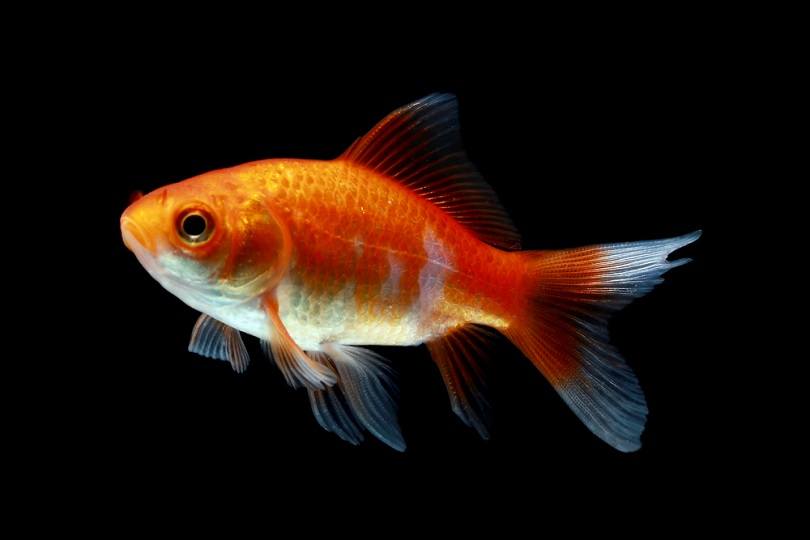
| Size | Up to 12 inches |
| Lifespan | 10+ years |
| Compatibility | Best with other aggressive feeders |
The Comet Goldfish stands out as an American variety among the many goldfish variants. They have long, forked tails that give them their unique appearance. You’ll typically see them with at least two colors, which can be a mix of any of the usual goldfish shades. Like the Bristol Shubunkin, this one also has a seemingly endless appetite. They’re best kept with varieties that are equally food motivated.
3. Ranchu Goldfish
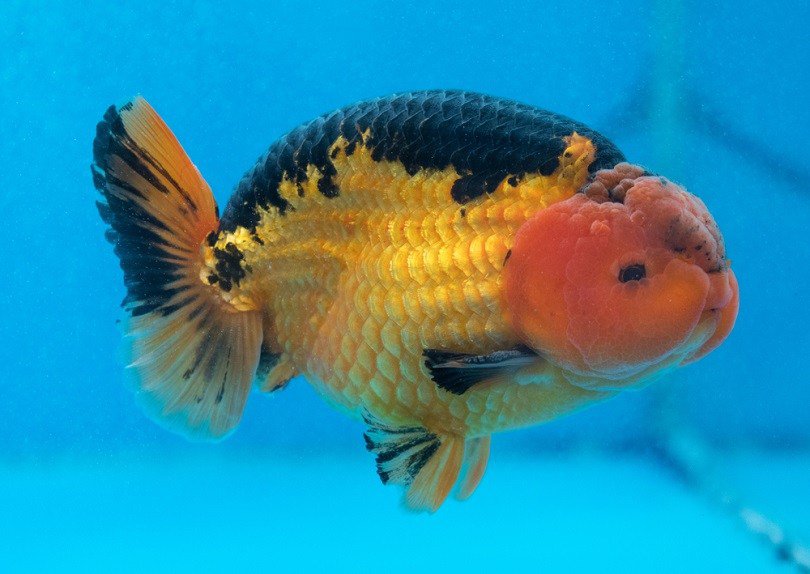
| Size | Up to 8 inches |
| Lifespan | 10+ years |
| Compatibility | Peaceful |
The Ranchu Goldfish is an attractive pond fish with an egg-shaped body. You’ll find them in various color combinations of white, orange, and black. It’s worth noting that they develop hoods over their heads, adding a lot of interest to their overall look. They also don’t have a dorsal fin like most varieties. They are easy to care for, making them a good choice for beginners. They are also peaceful and compatible with most species.
4. Fantail Goldfish
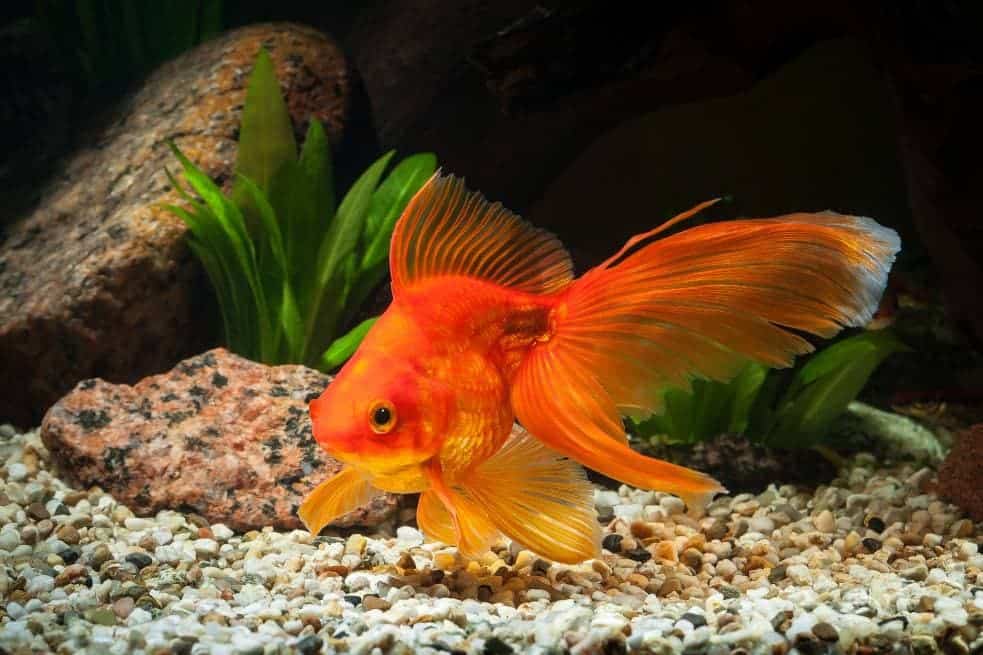
| Size | Up to 8 inches |
| Lifespan | Up to 10 years |
| Compatibility | Best with long-tailed varieties |
The Fantail Goldfish is a beautiful species with long-flowing fins that make them seem like they’re gliding through the water. They come in solid and multi-colored patterns and are relatively cold-tolerant. However, it’s probably best to bring these fish inside during the winter if you live in a northern climate. We suggest putting smooth rocks and decor in your pond to protect their long fins from injury.
5. Wakin Goldfish

| Size | Up to 10 inches |
| Lifespan | Up to 15 years |
| Compatibility | Peaceful |
The Wakin Goldfish is a slender-bodied variety with a peaceful nature that is an excellent choice for a pond. It is an active fish that always seems to be on the move, exploring the surroundings. They usually come in two colors, although they are relatively rare compared to other goldfish. Nevertheless, they are hardy and tolerant of many conditions. Interestingly, they fare better in cool water, making them an ideal addition to your pond.
6. Ryukin Goldfish
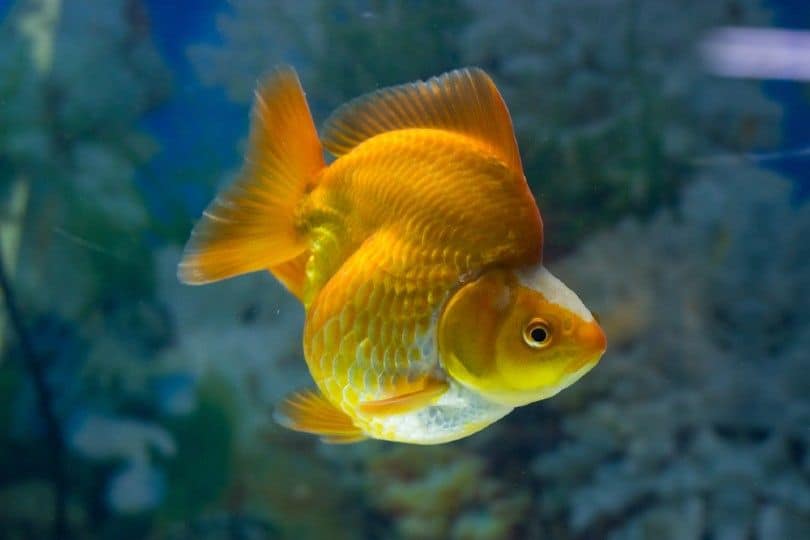
| Size | Up to 8 inches |
| Lifespan | Up to 15 years |
| Compatibility | Peaceful |
The striking feature of the Ryukin Goldfish is its curious, disc-like body shape. You’ll find these fish in a wide variety of colors and patterns that certainly grab your attention. Like the Wakin Goldfish, this one prefers cold water. They also thrive in large aquariums, making them a decent choice for a pond. As you might expect, they are not fast swimmers and do best with other slower-moving varieties.
7. Black Moor Goldfish
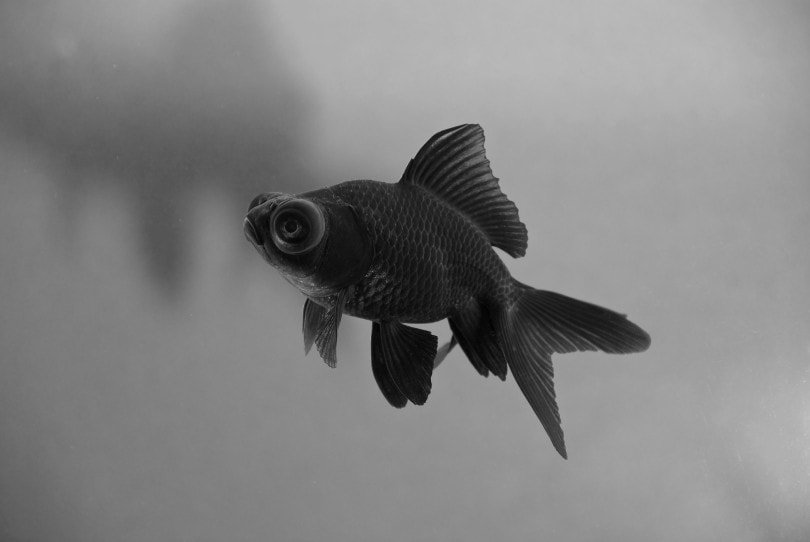
| Size | Up to 10 inches |
| Lifespan | Up to 10 years |
| Compatibility | Peaceful |
The Black Moor is an interesting fish choice for a pond since there will likely be a stark contrast to the other fish in your pond. These fish have peaceful temperaments and will get along with most fish. They don’t swim fast because of their long fins and poor vision. Surprisingly, they may change color as they age, turning from a dusty brown to orange in most cases.
8. Oranda Goldfish
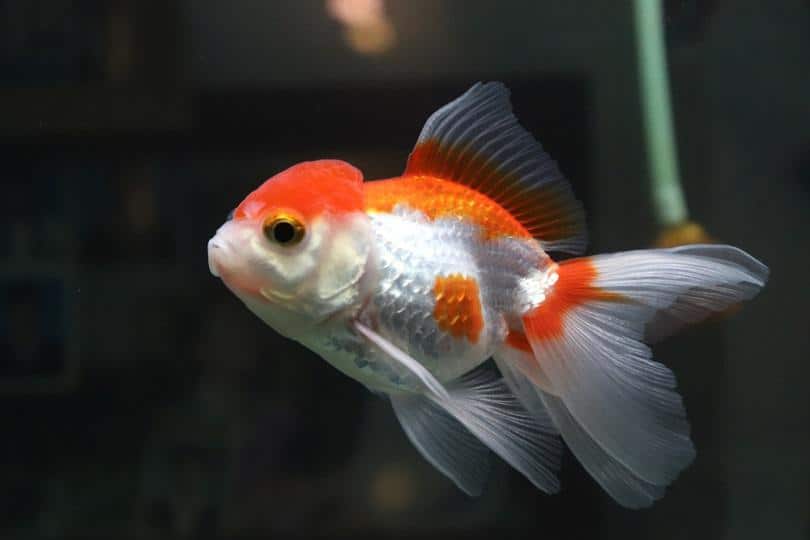
| Size | Up to 10 inches |
| Lifespan | Up to 15 years |
| Compatibility | Peaceful |
The Oranda Goldfish is a pretty fish, with long-flowing fins and a signature hood or cap on top of its head. You’ll find them in a variety of colors, sometimes with a contrasting shade on their hood, such as the Red Cap Oranda. While they are peaceful, they are not as tolerant of a neglected pond as other varieties. They also do better with other slow-moving fish because of their long fins.
9. Lionhead Goldfish

| Size | Up to 8 inches |
| Lifespan | Up to 15 years |
| Compatibility | Peaceful |
The Lionhead Goldfish is an unusual-looking fish with its bulbous wen or hood over its entire head. These fish have a mean appearance, which is a stark contrast to their peaceful nature. They resemble the Ranchu Goldfish but with a different body shape. However, they also lack a dorsal fin. They are not fast swimmers and will fare best with similar varieties and temperaments.
10. Tamasaba Goldfish
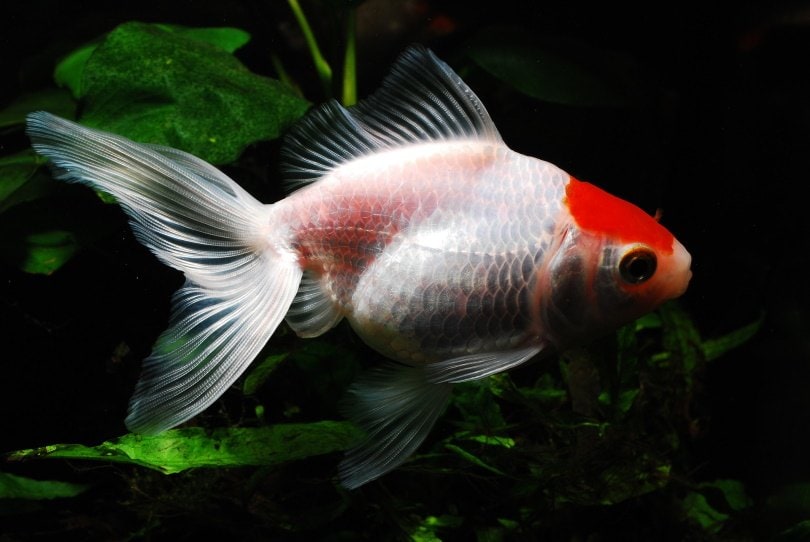
| Size | Up to 10 inches |
| Lifespan | Up to 10 years |
| Compatibility | Best kept with koi |
The Tamasaba Goldfish is probably the rarest of the pond fish on our list. They look like Ryukin Goldfish but with stocky bodies. You’ll see them in white, red, and orange colors. The Japanese selectively bred this variety for their cold hardiness. They’re probably a better choice if kept with faster-moving koi rather than other goldfish.

Goldfish Care Tips
Minimizing stress and maintaining a clean pond are the best ways to ensure a long, healthy life for your goldfish. You can think of a pond as a large aquarium—it requires the same maintenance for stable conditions. If you’re going to move your fish indoors during the winter, take the same precautions to make the transition as easy as possible. Don’t reintroduce them outdoors until early summer.
Compatibility is also an issue, as you may have surmised. While goldfish are usually peaceful, the faster, slender-bodied fish varieties might chase slower ones with longer fins. We suggest sticking with one type instead of mixing them. We also recommend covering your pond with a net to keep predators out of the water.
We’d be remiss if we didn’t conclude with one word of advice: if keeping pond fish isn’t for you, find your pets another home instead of releasing them in the wild. The hardiness of goldfish has made them one of the most invasive species in the world. They can outcompete many native fish and put them at risk of extinction.
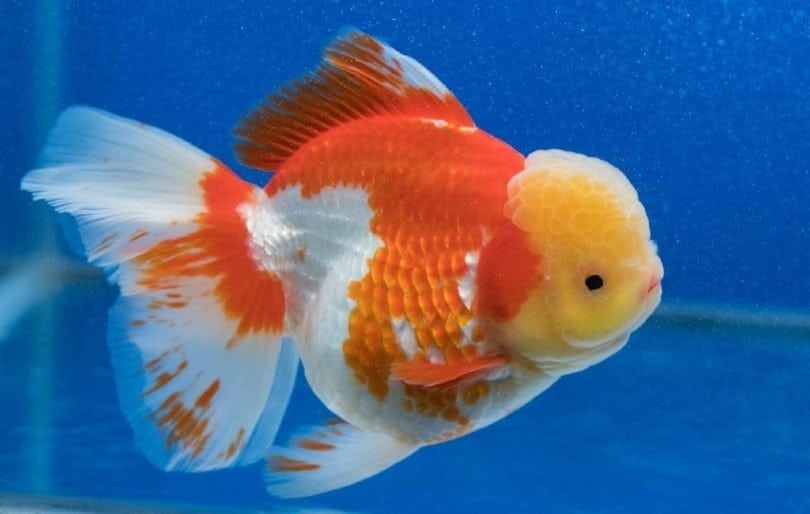

Conclusion
Setting up a goldfish pond in your yard is an excellent way to add an attractive focal point to your landscaping. You can relish the nature around your home and enjoy the relaxing feeling of watching them swim in their new digs. Remember that a pond is a commitment. Keeping the conditions clean and stable will help ensure you can enjoy your aquatic pets for years to come.
You might also be interested in:
Featured Image Credit: Waraphornapha, Shutterstock
